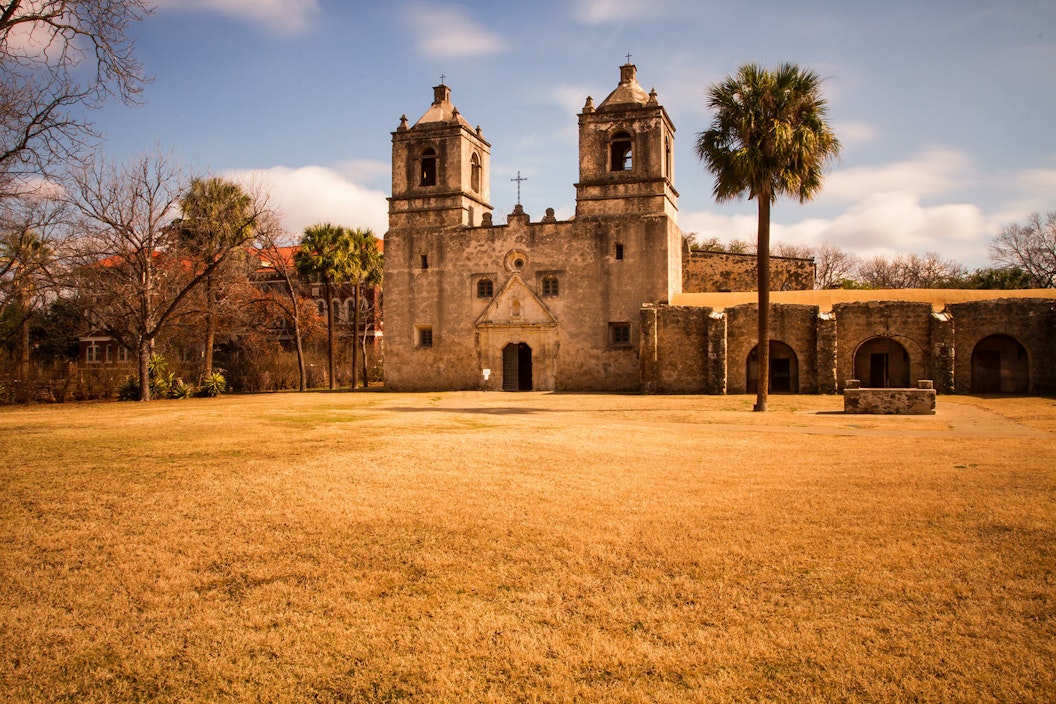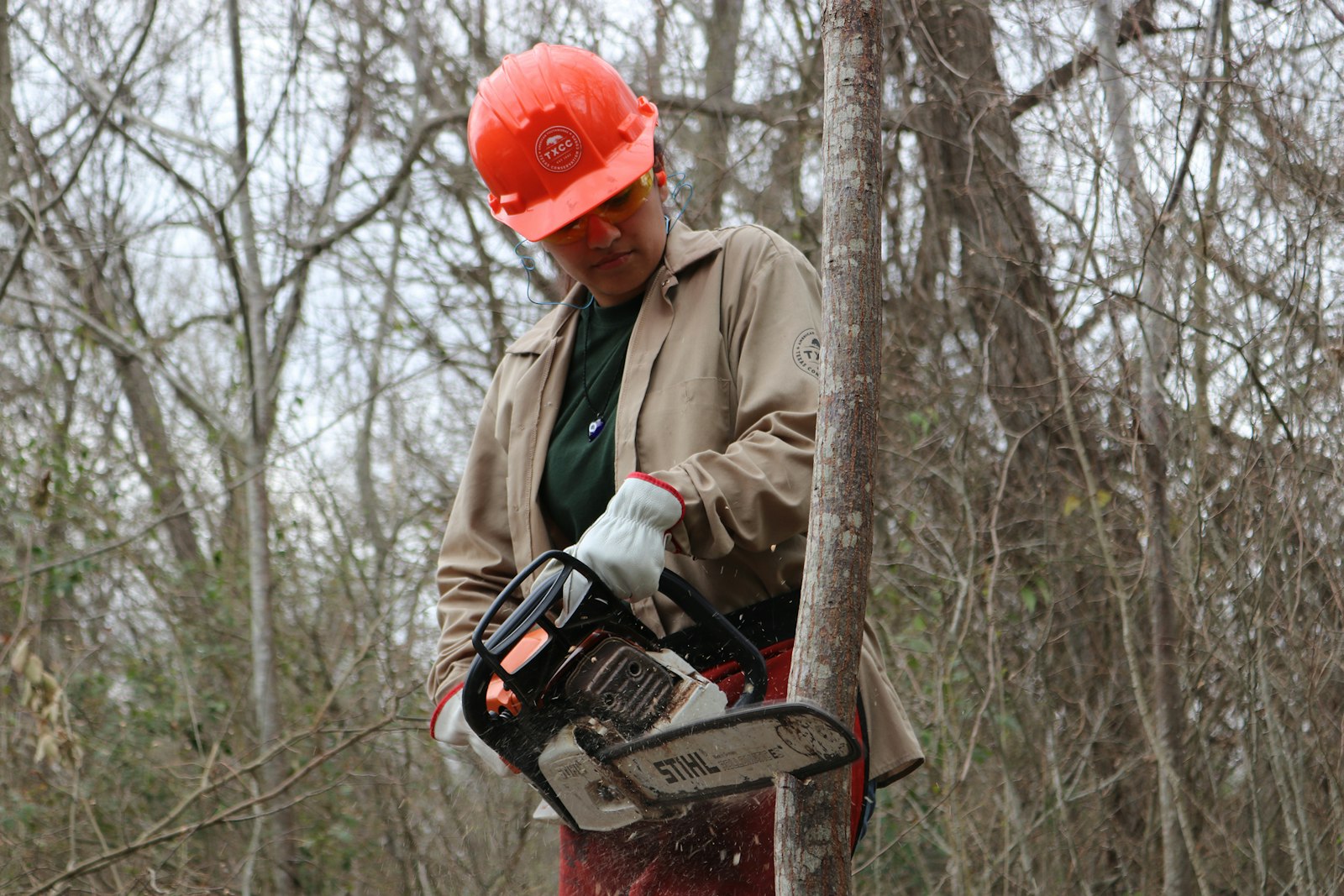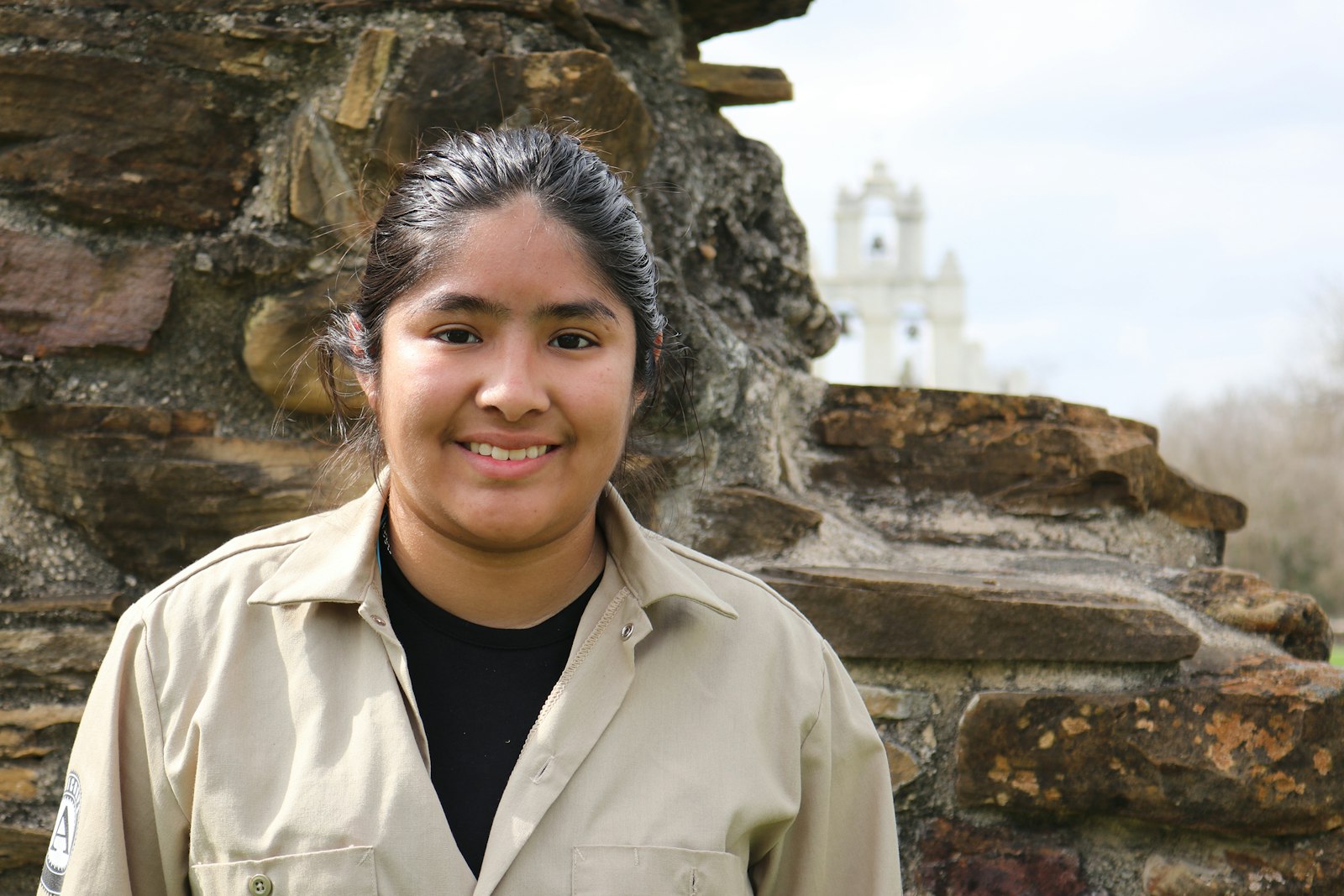
San Antonio Missions National Historical Park is a piece of a UNESCO World Heritage Site preserving four of the five Spanish frontier missions in San Antonio.

An endearing expression in Latinx cultures is, "échale, ganas, mijo/a," passed from elders to younger community members to encourage hard work and dedication. This phrase, translating to “give it your best, son/daughter," is also emblematic of the role our families play in passing on traditional knowledge through hands-on experiences and the important ways this can help guide the growth and advancement of the next generation of community leaders.
The Cultural Landscape Apprentice program, a collaboration between the National Park Foundation, National Park Service, Mission Heritage Partners, and American YouthWorks' Texas Conservation Corps, matches local Hispanic and Latino young adults with opportunities to learn about cultural landscape management in a hands-on environment alongside National Park Service employees at San Antonio Missions National Historical Park. The program is designed to prepare participants for careers in conservation, water management, and environmental planning, using the cultural guiding star of "échale ganas, mijo/a." The Cultural Landscape Apprentice Program is supported by the National Park Foundation's Latino Heritage Fund.
According to the National Park Service, "cultural landscapes reflect our multi-generational ties to the land, with patterns that repeat and change to remind us of the depth of our roots and the unique character of our present.” As it applies to these apprenticeships, participants learn skills from National Park Service mentors through hands-on work in grounds preservation, maintenance, and landscape bed rehabilitation. Another key aspect of the work involves preserving the historic acequias, the Spanish word for irrigation canals.
For participating young adults, the apprenticeship is also an opportunity to walk in the footsteps of youth that crafted traditional wares on the missions several hundred years ago while preserving the legacy of a global treasure.
Named the first World Heritage Site in Texas in 2015 by the United Nations Organization for Education, Science and Culture (UNESCO), San Antonio Missions National Historical Park includes the city’s four southernmost Spanish colonial missions – Concepción, San José, San Juan, and Espada. The park also provides space for people to delve into complicated histories that involve the Indigenous communities in the area, the impact of Spanish colonialism, and the way of life within the missions. Two historic acequias are part of these histories as the ability to irrigate farmlands and bring water to the mission communities was imperative to the survival of the Spanish colonial missions.
For the apprentices, learning about the acequias and their continued use to supply water from the San Antonio River to the mission and nearby farmland is key - from learning about the Native American labor that built the acequias for the missions to understanding the shared role that both the historic mestizo communities and Native Americans have had over the centuries in preserving the complex water system that irrigates 3,500 acres of land spanning over 15 miles, and the start of riparian laws and water rights in the U.S.
Get to know the park’s 2020-2021 cultural landscape apprentices and learn how they are gaining valuable skills while helping to preserve the park's natural and cultural resources so that current and future generations can continue to explore the park’s complex history.

What is your favorite part of the apprenticeship?
I would say that my favorite part has been the inclusivity. The staff really took us in as part of the team when it comes to teamwork and safety on projects like pruning, weed whacking, and acequia work.
What is your best memory in a national park?
My family and I would visit national parks when I was a kid. When my cousins came over, we would go visit San Antonio Missions in the morning and then have a big barbeque afterward.
Why is cultural resource management important?
Cultural resource management is important because it’s preservation of time. We’re not just preserving the buildings but also preserving the landscape. We’re helping to share with people what it was like back then, in the mission period.
What is one thing you hope to learn in this apprenticeship?
I really am interested in learning how field work is actually done. I want to get a feel for working in the natural environment with tools.
What are your future career goals?
Right now, I’m getting my bachelor’s degree in environmental sciences, and I want to know if specializing in conservation management would be a good fit for me and my career.
Hear more from Yukary on San Antonio Missions National Historical Park’s website.

What is your favorite part of the apprenticeship?
So far, working outside has been a great change of pace. My second favorite part of the apprenticeship has been the people. Our crew is great to be around. We’ve worked on outdoor projects together like pruning around every mission, replacing bollards, and mowing already in the first month of the apprenticeship.
What is your best memory in a national park?
When I was a kid, we used to come here to Texas from California every summer because my grandfather lives here. It was always summer, and it was always HOT. My grandfather would say, “I’ve already seen the missions. You all go explore.” He would sit on a bench and send us loose to visit the park.
What is one thing you hope to learn in this apprenticeship?
In this apprenticeship, I hope to learn my potential and learn what I'm capable of doing out here. At first, I thought that I might be limited in what I could physically do. Then, I realized that I could do this. It's amazing, realizing that you can do things and doing them with confidence.
What are your future career goals?
I’m applying for grad school now so I can start in Fall 2021. I want to get my master's degree in public policy. I minored in public policy at the University of Texas at San Antonio, and I realized that I want to use public policy to make an impact through policy and law. Environmental policy is interesting to me.
How will your experience as a Cultural Landscape Apprentice help you to achieve these goals?
Being out here will help me to understand environmental policy. I’ll be able to apply this hands-on experience to my future studies in environmental policy. Doing the work now helps me to know what it’s like on the ground and better advocate for funding because I’ve been there in the field. I could apply that to lots of policy.
What advice do you have for current students interested in pursuing cultural and natural resource management?
It’s important to get out there. Internships are really important to get your foot in the door and get your feet wet. It can be easy to get intimidated. Just try it and don’t miss the opportunity!
Hear more from Karli on San Antonio Missions National Historical Park’s website.

What is your favorite part of the apprenticeship?
I enjoy using the power tools. So far, we’ve used power tools for pruning, mowing and weed eating. Before starting this apprenticeship, I had used hand tools for pruning but I had never used a pruning saw. It’s been fun to learn to use power tools and be around the trees all day. I find it relaxing to work outdoors around the trees.
What is your best memory in a national park?
We didn’t really go to national parks as a family when I was a kid, because my parents weren’t very interested in nature. I didn’t visit the missions until a few years ago. I recently went on a trip to Rocky Mountain National Park, which was my first time visiting a national park and not a national historical park. This apprenticeship has been my biggest exposure to the national park system.
Why is cultural resource management important?
It’s important to preserve the land and the history of a certain period in time. Preserving this place helps us to understand how things came about, especially here at San Antonio Missions. It’s important for people to be able to come here and learn about the mixing of Spanish and Indigenous cultures. I’m also always drawn to the trees in parks, and the work that we do helps to maintain this landscape and make the park experience more enjoyable for visitors. Keeping the park nice, what we are doing in our internship, is very important.
What is one thing you hope to learn in this apprenticeship?
While I’m here, I want to take the opportunity to learn how to identify different trees.
What are your future career goals?
I want to go to grad school for Environmental Science and become a scientist. In my career, I want to do something with environmental education and specifically use my Spanish speaking skills. It’s important to get more youth engaged (and adults, too!) My parents, for example, have become more interested in nature and the environment recently. It's just fun!
What advice do you have for current students interested in pursuing cultural and natural resource management?
My advice would be to try an internship out for the summer. Do some kind of work like this apprenticeship to see if it's something you want to do. Internships and on-the-job experiences are really helpful. And don’t be scared or intimidated by all the science courses that you have to take in college as an Environmental Science major.
Hear more from Sarah on San Antonio Missions National Historical Park’s website.